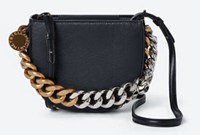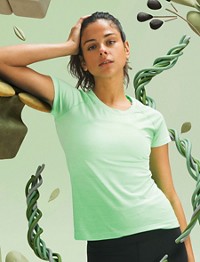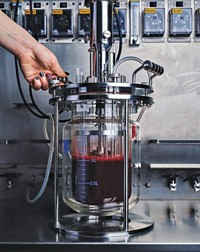Advertisement
Grab your lab coat. Let's get started
Welcome!
Welcome!
Create an account below to get 6 C&EN articles per month, receive newsletters and more - all free.
It seems this is your first time logging in online. Please enter the following information to continue.
As an ACS member you automatically get access to this site. All we need is few more details to create your reading experience.
Not you? Sign in with a different account.
Not you? Sign in with a different account.
ERROR 1
ERROR 1
ERROR 2
ERROR 2
ERROR 2
ERROR 2
ERROR 2
Password and Confirm password must match.
If you have an ACS member number, please enter it here so we can link this account to your membership. (optional)
ERROR 2
ACS values your privacy. By submitting your information, you are gaining access to C&EN and subscribing to our weekly newsletter. We use the information you provide to make your reading experience better, and we will never sell your data to third party members.
Biomaterials
Sustainable materials make a play for the vegan leather market
A new crop of biobased material makers aims to displace chrome-tanned cowhide
by Craig Bettenhausen
March 7, 2021
| A version of this story appeared in
Volume 99, Issue 8
Leather is a maker’s dream material. It cuts well; it holds a stitch; it can be dyed, stamped, or tooled; it’s warm but breathable; it’s strong but flexible.
But it has a heavy environmental footprint. Modern tanning uses chromium salts to cross-link collagen fibers, creating large quantities of wastewater. And, of course, the hides mostly come from the meat and dairy industry, which many people consider environmentally unsustainable.
A concern for sustainability is a common thread among the entrepreneurs who are working to bring leather alternatives to market. These aren’t the synthetic pleathers found in cheap shoes and purses. Leatherlike textiles made from nonanimal sources, sometimes called vegan leathers, are positioned as premium products for high-end goods.
C&EN collected several samples, and they are, in a word, convincing. Plants and mushrooms are being made into materials that effectively mimic leather. The tough softness, slight tack, and heavy feel of leather are there. And each has a sustainability story to tell, one that some brand owners think customers will find compelling.


The overall market for bulk leather is around $80 billion annually, according to Nicole Rawling, executive director of the Material Innovation Initiative, a nonprofit working to advance next-generation materials. Sales of finished leather goods total more than $400 billion. Even a small slice of those markets would be a win for alternative leathers.
Tiffany Hua, an analyst at Lux Research, says leatherlike materials made from plants are the most advanced, partly because manufacturing is relatively simple. She predicts they will reach $1 billion in sales by 2025. The next to rise will be mushroom leather, followed by cell culture leather. “The issue is scale,” she says. “A lot of these technologies are on the smaller scale and can’t really be adopted on the mass market just yet.”
But investors are taking notice. Rawling counts more than $200 million in public investments in nonanimal-leather start-ups in recent years, led by Bolt Threads, one of C&EN’s 10 Start-Ups to Watch in 2015, which raised $123 million in 2018. Internal investments at established firms bring the total much higher.
“The ideal time to invest in alternative leathers is now,” Hua writes in a recent market report. “There is ample opportunity for clients to spread their bets by partnering with near-term players and investing in disruptive long shots.”
Of the alternative leathers, those made from plants are conceptually the most straightforward. Blend low-cost natural fibers with polymers and form them into sheets. Getting from that basic recipe to a leatherlike material made at commercial scale, however, requires careful chemistry and engineering.
Luke Haverhals ties scale-up at his company, Natural Fiber Welding (NFW), to sustainability. With renewable feedstocks and an efficient process, NFW’s leather alternative has a carbon footprint one-fortieth that of cow leather, he says. It’s also recyclable and biodegradable. There’s no waste, Haverhals says, because cuttings can be folded back in at the beginning of the process.
“NFW is making its bet that nothing out-scales photosynthesis,” he says. The firm takes agricultural lignocellulose waste such as cork dust or sawdust and combines it with biopolymers to create a leatherlike material it calls Mirum. Haverhals has patents on key chemical tools, such as biobased curatives and vulcanizing agents for natural polymers, as well as methods for tuning texture and stiffness.
NFW is growing fast, going from 20 employees at the start of 2020 to more than 90 today. Thanks in part to an investment from Ralph Lauren, it’s building a factory in downtown Peoria, Illinois, that will turn out millions of square meters of Mirum and other chemically upcycled fabrics per year. And the firm just announced a $2 million investment and supply deal with the sustainably minded shoe company Allbirds.
Another company, Desserto, is using nopal cactus for its leather alternative. The cactus, also known as prickly pear, is a perennial crop that grows without irrigation or pesticides in the dry soils around Desserto’s headquarters in Guadalajara, Mexico. “Cactus is a great solution because any farmer—with or without access to water, with or without access to chemistry—they can grow it,” cofounder Adrián López Velarde says.
The cactus has a long history in the region as a food crop. But price fluctuations in recent years drove many farmers out of the business, leaving fields fallow. By bringing those acres back on line, Desserto has been able to source its cactus at good prices, avoid clearing new farmland, and stimulate an economically depressed area, Velarde says.
Desserto blends powdered cactus leaves with a biobased polyurethane. It’s not as simple as it sounds. Velarde says it took a lot of trial and error to get to a material that behaves well and feels good to the touch. “I’m not a chemistry degree person, but I love working with them,” Velarde says. “When we finally cracked the formulation and were able to make it work, it was fantastic.”
Desserto can make about 25 million m2 of material per year, which it mostly sells to the footwear and fashion industries at prices that Velarde says are competitive with cow leather. Its R&D team is working on replacing the biobased polyurethane with plant-based and fully biodegradable resins, while Velarde and cofounder Marte Cázarez are expanding the firm’s customer base. In late February, the fast-fashion brand H&M said it will include products made from Desserto in its Science Story collection launching March 18.


Though plant leather is at the largest scale today, mushroom leather is getting more headlines. Most “mycoleather” makers use the root structure of mushrooms—called mycelium—though a brand called MuSkin uses the caps.
Chitin is the main structural material in mycelium, says Matt Scullin, CEO of the start-up MycoWorks. He named his leather alternative Reishi, after the mushroom species his company uses. A patent the firm holds describes treating the mycelium with polyols such as propylene glycol to impart flexibility and with glutaraldehyde, pyrogallols, or catechols—which are also used in chrome-free cow leather tanning—to add strength and resilience by cross-linking the chitin fibers.
MycoWorks has gathered $62 million in investments and opened a 2,300 m2 facility in Emeryville, California, last year that grows mycelium in trays. It employs around 80 people. “We’re still at relatively small scale, but we’re definitely out of the lab and in production,” Scullin says.
Bolt Threads is also pursuing mycelium leather, which CEO Dan Widmaier views as a natural outgrowth of the firm’s work making spider silk in genetically engineered yeast. In addition to similar culturing methods, he says, they share a customer base. Many of the designers he’s shown the silk to ask him for a leather replacement that is similarly vegan.
Widmaier isn’t worried about the competition. In part, he’s confident in Bolt’s technology and team. But more than that, he thinks there’s plenty of room in the market. “There could be an order of magnitude more biomaterials companies, and the space would still be happy because scale takes time,” he says.
Bolt Threads is building a plant that will be able to make 93,000 m2 of its Mylo mushroom leather per year. The firm employs around 100 people, Widmaier says, and “is growing hand over fist.”
Mylo, like Reishi, Desserto, and Mirum, is intended to be a full-market replacement for cow leather. But Bolt is starting with apparel, accessories, and footwear. Widmaier says Bolt’s existing supply relationships with Lululemon Athletica, Stella McCartney, Adidas, and the Karing family of brands consume all its output. Automotive and upholstery are “giant, giant markets asking for huge volumes,” he says. “We aspire to be there.”
Even leather made from fish skins is growing in market share, according to Lux. Though it’s not vegan like the rest, it can displace exotic leathers made from snakes or alligators, which unlike fish are often killed just for their skins, says Benjamin Malatrait, CEO of the fish leather start-up Ictyos.
A few firms, including Modern Meadow and VitroLabs, want to go beyond mimicry by making a leather material out of lab-grown collagen. It’s cutting-edge stuff, which may be why the firms declined to be interviewed for this article.
Despite the early-stage risk and secrecy, Lux’s Hua is watching cell culture leather closely. The tanning is the same, but not having to deal with fat, hair, or the meat industry “could be pretty disruptive,” she says. “It is a risky bet, but I think it’s worth investment. It could be really revolutionary.”
Michael Maines of the leather goods maker LVX Supply says his customers are “absolutely” interested in vegan alternatives. LVX’s vegan line of bedroom restraints sells well, he says, though the firm uses a composite of nylon and polyvinyl chloride because the mushroom- and plant-based materials he’s tested so far aren’t stiff and thick enough for that specialized application.
As new materials get out there, makers of all stripes will find uses for them, Maines predicts. That in turn will build the scale the firms behind them need to keep innovating, he says. “Our company has done well with creating items that people didn’t think of themselves. They kind of don’t know what they want till they’re shown what they want. And I think the same is true for alternative materials.”
Correction
This story was updated on March 10, 2021, to correct the name of the mushroom leather sample shown in a photo. It is Mylea, not Mylo.





Join the conversation
Contact the reporter
Submit a Letter to the Editor for publication
Engage with us on Twitter